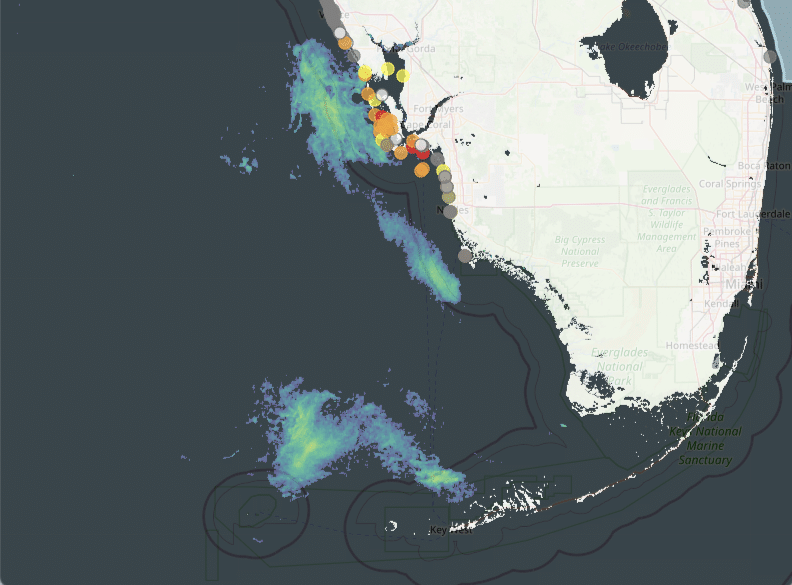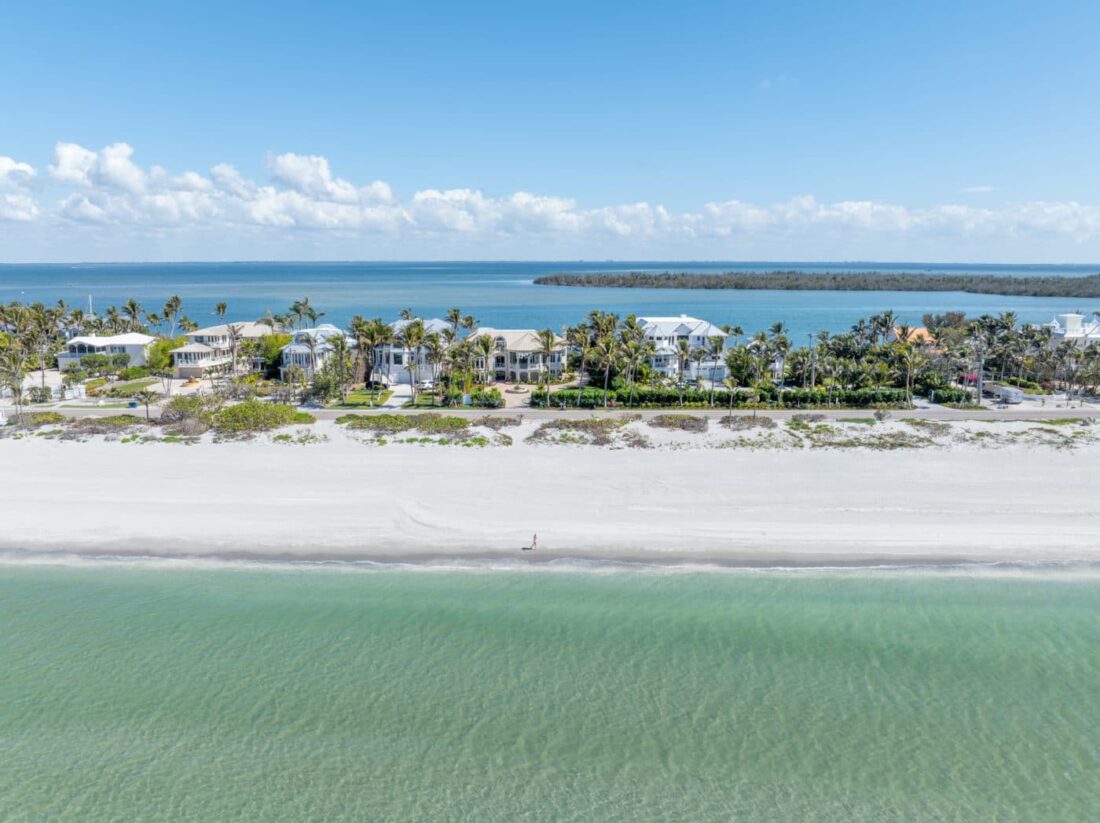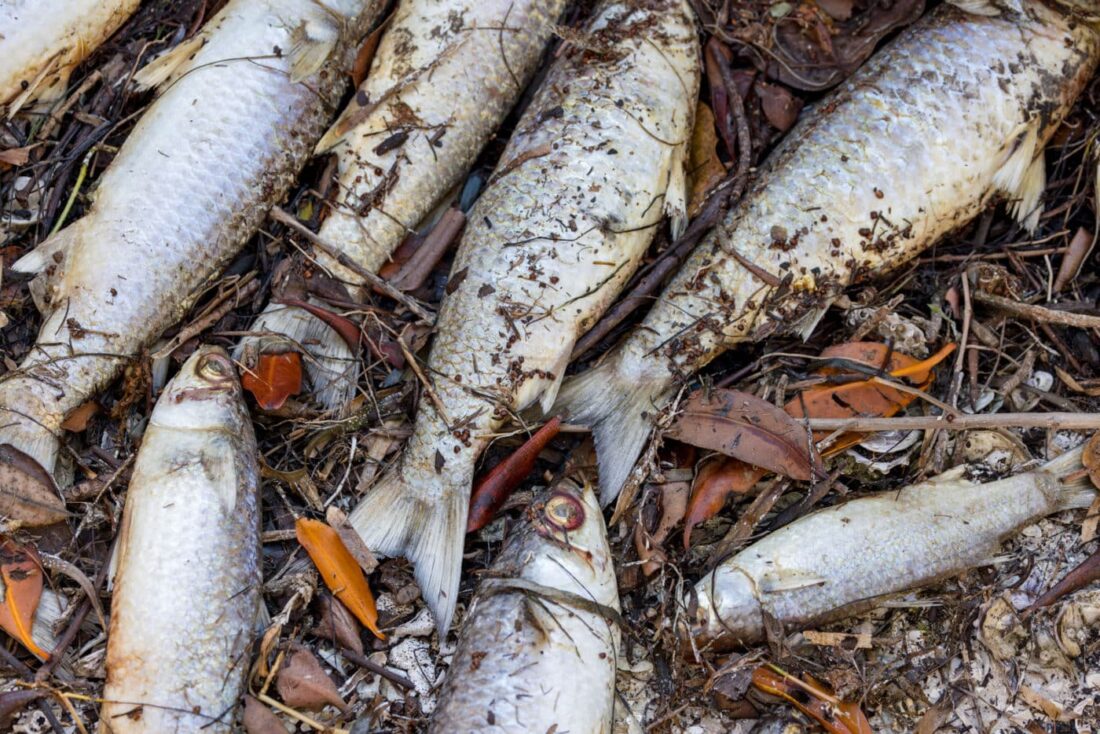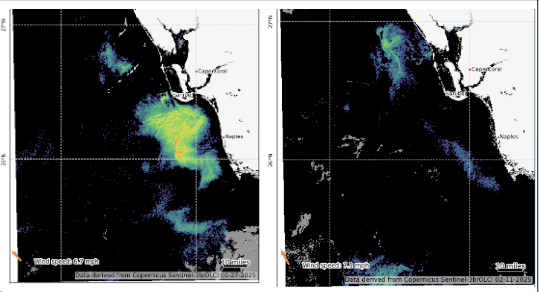SCCF: Red tide bloom may have run course
The Sanibel-Captiva Conservation Foundation (SCCF) reported on Feb. 12 that the red tide bloom off of Sanibel and Captiva may be in decline based on lower counts, as well as a shift in satellite imagery that showed it moving to the north and south of the islands.
The SCCF Marine Lab found the highest concentration of Karenia brevis over the past week to be 1.9 million cells per liter at Blind Pass Beach, with 1.5 million cells per liter at Tarpon Bay Road Beach. Those counts of K. brevis — the organism that blooms into red tide — were down from high counts of 22 million cells per liter two weeks ago at two beaches on Sanibel.
“Our sampling in Pine Island Sound yesterday found the highest counts in Tarpon Bay with two readings over 250,000 cells per liter. The Redfish Pass area was also of concern, but overall, it seems to be subsiding on the Pine Island Sound side of the islands,” SCCF research associate Mark Thompson said on Feb. 12.
Further south, they found low concentrations off of Sanibel and background to no Karenia in the San Carlos Bay, near the Sanibel Causeway.
Samples taken on Feb. 12 on the causeway and Sanibel beaches showed no Karenia cells. However, scientists and volunteers gathering the samples still noticed respiratory irritation. Satellite imagery also showed a significant shift in the bloom, indicating lower counts and less intensity, as well as movement away from the islands.
Fish kills reported to the SCCF also decreased this week compared to last week. However, SCCF scientists cautioned that sometimes blooms diminish somewhat and then flare up again.
“The most recent satellite fluorescence shows smaller patches than we were seeing. It may be declining, but it also may be regrouping,” SCCF research scientist Rick Bartleson said.
“Inshore and nearshore, concentrations can drop to zero, cells change shape, other species of phytoplankton start growing and blooming instead,” he added. “Sometimes that happens right after cell counts skyrocket and fish die off en masse.”
Overall, SCCF scientists said conditions were improving. Optimistically, they think the bloom has run its course for the time being, but there are still patches offshore — one to the north off of Captiva and one that is south toward Collier County.
Florida Department of Health in Lee County alerts remain active for many area beaches.
The SCCF’s environmental policy team has been in communication with water managers as the U.S. Army Corps of Engineers decides how to manage flows over the remainder of the dry season.
“We ask the USACE to reduce the recovery operations flow target at the S-79 structure to the lower range of the optimum flow envelope to reduce nutrient loading while protecting the salinity gradient of the Caloosahatchee Estuary,” SCCF Policy Associate Allie Pecenka said.





